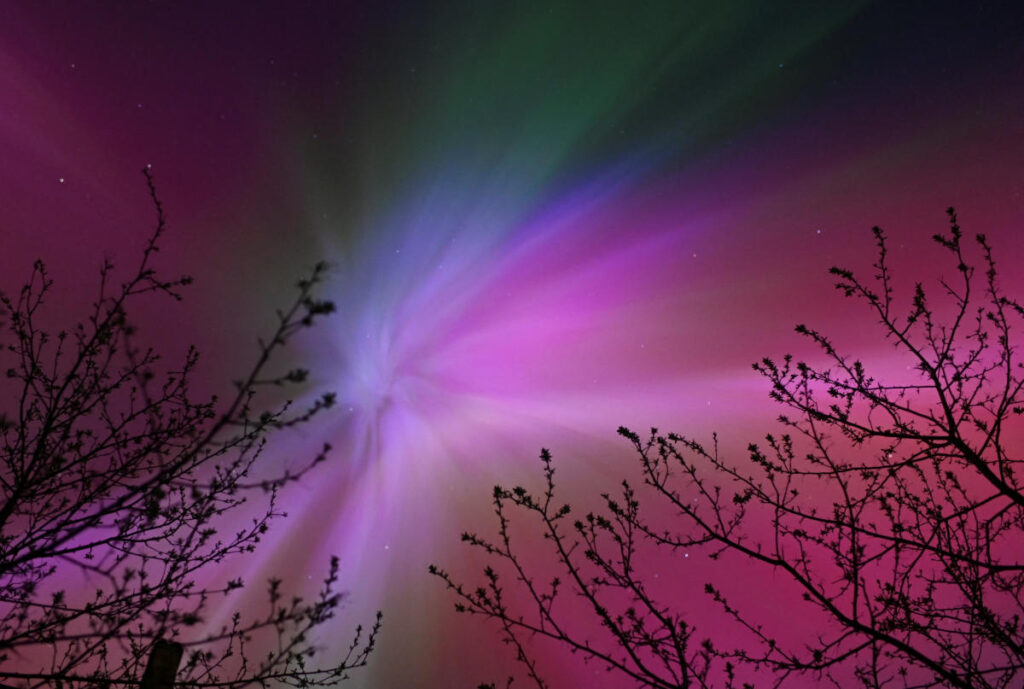The strongest geomagnetic storm in 20 years made the colorful Northern Lights visible across the United States Friday night, even in areas that are usually too far south to see them. And the show might not be over yet. If skies clear, tonight could provide another chance to catch the aurora, and more aurora could appear on Sunday as far away as Alabama, according to the National Oceanic and Atmospheric Administration.
The National Oceanic and Atmospheric Administration’s Space Weather Prediction Center said Saturday that the sun continues to produce powerful solar flares. This is the basis for previously observed coronal mass ejections (CMEs), or explosions of magnetized plasma, that won’t reach Earth until tomorrow. The agency has been monitoring a particularly active sunspot cluster since Wednesday and confirmed yesterday that it had observed G5 conditions – a level designated as “extreme” – not seen since October 2003. In a press release on Friday, Clinton Wallace, director of the National Oceanic and Atmospheric Administration’s Space Weather Prediction Center, said the current storm was “an unusual and potentially historic event.” ”.
On May 10 and 11, 2024, the sun launched two powerful solar flares, peaking at 9:23 pm (EST) on May 10 and 7:44 am (EST) on May 11. . https://t.co/nLfnG1OvvE pic.twitter.com/LjmI0rk2Wm
— NASA Sun and Space (@NASASun) May 11, 2024
Geomagnetic storms occur when outbursts from the Sun interact with Earth’s magnetosphere. While this all sounds a bit scary, local people have nothing to worry about. As NASA explains on X, “harmful radiation from flares cannot pass through the Earth’s atmosphere” and affect our bodies. However, these storms can disrupt our technology and have been known to disrupt communications, GPS, satellite operations and even power grids.
